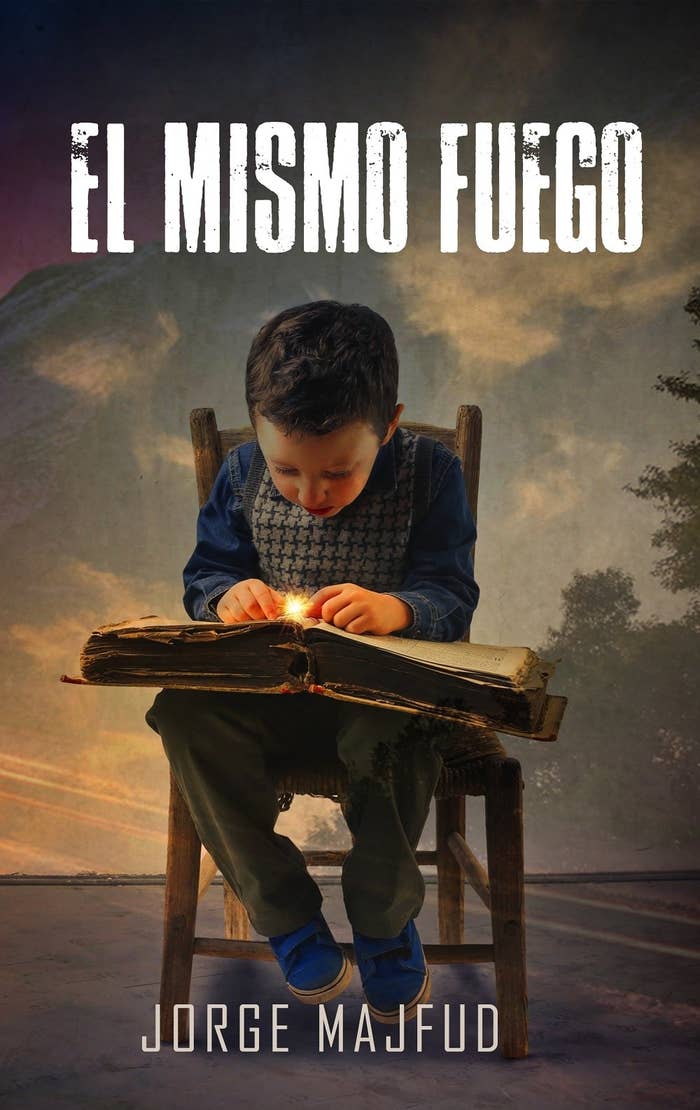
One of the most popular Latin America writer Jorge Majfud has returned with his latest novel called El mismofuego (The Same Fire) published in Mexico (Cuauhtemoc Rebelde Editores) and available in the USA, Mexico, Spain and other countries. This is his next book after publishing Tequila (Sudaquia Editores, New York), a ‘road story’ in Majfud's style, which came out in 2018, a few months back only.
With the The Same Fire, Majfud confirms the reasons why he is one of the most notable cult authors of our time. This novel is a psychological and spiritual confession of a child who suffers fromhyperthymestic syndrome. As a result, he cannot forget anything. Also, at the same time, he can only understand the present events from the perspective of the past. Throughout the book you will get to taste both a Bildungsroman and a thriller story. The book also explores areas like first deep feelings of childhood, which includes love, the desire for women, and the pain. Jorge Majfud is one of the few cult writers who are left. In this book, you will find why.
Jorge Majfud is a Uruguayan American writer who was born in 1969. He was born in Tacuarembó, Uruguay and grew up during the military dictatorship that directly hit his family. He completed his architecture degree in 1996 from the University of the Republic in Montevideo and studied at Escuela Nacional de Bellas Artes. After working in many different countries in construction, structural calculation, and as a Math professor, in 2003 he abandoned these professions to return to his first passion. This is why he decided to study literature and philosophy at the University of Georgia where he received a doctorate degree in 2008. He currently teaches International Studies at Jacksonville University in Florida and frequently lectures in different universities around the world.
Throughout his life, he has published many books as well as short stories and even worked as a journalist. You can find many of his writings on the internet. Some of his works include Memorias de un desaparecido (novel, 1996), Crítica de la pasión pura (essays, 1998), La reina de América (novel, 2001), La ciudad de la Luna (novel, 2009), Crisis (novel, 2012), El mar estaba sereno (novel, 2017), Neomedievalism. Reflections on the Post-Enlightenment Era (essays, 2018) and so many others.
Some of his contributions to other books includes The Routledge History of Latin American Culture (Edited by Carlos Manuel Salomon); Pertenencia. Narradores sudamericanos en Estados Unidos. Antología. (Melanie Márquez Adams, Hemil García Linares, editores); Ruido Blanco, Antología de cuentos de ciencia ficción uruguaya (Mónica Marchesky, coordinador); De la indignación a la rebeldía (with Eduardo Galeano, Carlos Taibo y SlavojZizek, Ediciones irreverentes), Ilusionistas (with Noam Chomsky), Cinco entrevistas a Noam Chomsky (with Michel Foucault, Ignacio Ramonet, Daniel Mermet, Jorge Majfud and Federico Kuksoand, Le Monde Diplomatique) and so on.
Many articles, papers and books have been published on his works, which include the book El otroen Jorge Majfud, by Raúl Ferrer Herrero. (Madrid: Ediciones Irreverentes), De un infierno a otro: El migrante latino en Crisis de Jorge Majfud, by Dr. Leonor Taiano. (Universidade do Estado do Rio de Janeiro Press), Finisterre: en el último lugar del mundo. Consideraciones sobre Crisis de Jorge Majfud, byby Dr. Leonor Taiano and Wladimir Chávez (Mexico, Editorial Destiempos), and "Identidad de la ausencia," by Silvia Gianni (UniversityofMilan).
The Same Fire, published by Cuauhtemoc Rebelde Editorial of Mexico is available at Amazon.com ( Click Here ) and in many different other countries.
The same fire "is a novel and is an existential autobiography based on the experiences of the author during the last military dictatorship in his country. The real facts, the names, the country and the subsequent evolution of different tragedies have been altered to protect the truth With a syntactic structure that lacks the relative pronoun “que” (“that”), the novel expresses in language the same functional absences that exist in the absolute memory of its protagonist, the child José Gabriel, without thereby preventing him from representing a world that his exaggerated memory registers in detail but its comprehension cannot encompass in its entirety.
"One morning, the children played in an old cart when a bullet went off. Why are we born, if we have to die? The years go by, as the trees pass before the window of the train; and Jorge is still looking for the answer. "
Eduardo Galeano


